When Should You Boot Windows 11 from USB?
When your Windows 11 computer won’t boot, you can start it from a Windows 11 bootable USB drive and access Advanced Startup Options (WinRE) to select a suitable option to repair Windows 11 from USB. On the other hand, you can also reinstall Windows 11 using the bootable USB drive.
Of course, there are other situations when you need to boot Windows 11 from USB. For example, if you want to recover data from an unbootable Windows 11 computer using MiniTool Power Data Recovery (professional data recovery software), you need to first create a MiniTool bootable USB drive and then boot your computer from that USB drive to rescue your files.
MiniTool Power Data Recovery TrialClick to Download100%Clean & Safe
Windows 11 Won’t Boot from USB!
However, at times, you may find that your Windows 11 won’t boot from USB or Windows 11 installation media not booting. This issue can happen to both desktops and laptops. When it happens, you will be unable to take further actions to deal with your Windows 11 issues. You should find the reason why Windows 11 bootable USB drive not working and take relevant measures to solve the issue.
Reasons for Windows 11 Won’t Boot from UBS
In this part, we will show you some main reasons for Windows 11 won’t boot from USB or Windows 11 bootable USB drive not working.
Reason 1: The USB Drive Is Not a Bootable Device
Not all USB drives can be treated as bootable USB devices. An ordinary USB drive is not bootable by default. If you want your Windows 11 computer to boot from a USB drive, you need to make the USB bootable in advance. Otherwise, your computer will not boot from that USB drive even you set it to boot from it.
Reason 2: The Bootable USB Drive Is Not Showing up in BIOS
If you want to boot your Windows 11 computer from a bootable USB drive, you need to boot the device into BIOS and set it to boot from the bootable USB drive. But you may not find that USB drive in BIOS.
Here are some reasons for this situation. For example, the USB port or cable may be broken. Or the USB drive may be damaged or corrupt.
Reason 3: The USB Drive Is Too Old
If the USB drive you use is too old, like USB 1.0 or USB 2.0, Windows 11 bootable USB drive not working or Windows 11 installation media not booting can easily happen. Your Windows 11 computer doesn’t support old USB devices.
Reason 4: The Bootable USB Drive Is Corrupt by Mistake
If your Windows 11 bootable USB drive not working even you set it as the boot drive, the USB drive may be corrupt by mistake. At the same time, you may receive an error message saying no bootable device found, or Boot Device Not Found, or No boot device is available, or Boot Device Not Found
Reason 5: The Format of the USB Drive Is Not Supported
If your computer is using Legacy BIOS mode, the bootable USB drive should be formatted with NTFS file system. However, if your device is using UEFI boot mode, the USB drive should be formatted with FAT32. If the format of your bootable USB drive doesn’t meet the above requirements, your Windows 11 computer will not boot from the bootable USB drive, of course.
Reason 6: You Haven’t Changed the Boot Order on Your Computer
Booting from the USB drive is not a simple operation to connect the USB drive to your PC and then boot up the device as usual. You need to first boot your computer into BIOS and move the bootable USB drive to the first boot queue. After that, your Windows 11 computer will boot from USB. If not, you will be unable to boot Windows 11 from USB.
If you still need to boot Windows 11 from a bootable USB drive, you need to take measures to fix the issue. We collect some effective solutions and show them in this article. If your desktop or laptop is unable to boot from USB Windows 11 UEFI/BIOS, you can try the solutions to help you out.
Solution 1: Check if the USB Drive Is Bootable
If your Windows 11 computer can’t boot from the USB drive, the first thing you need to do is to check whether the USB drive is bootable.
Here are the things you can check to make a confirmation:
Step 1: Check the USB Drive in File Explorer
You can go to File Explorer to check the appearance of the USB drive icon. Normally, the icon of a bootable USB drive on Windows 11 should have a blue monitor shape with a curved downward arrow (just like the following screenshot) unless you change the icon for the USB drive manually.
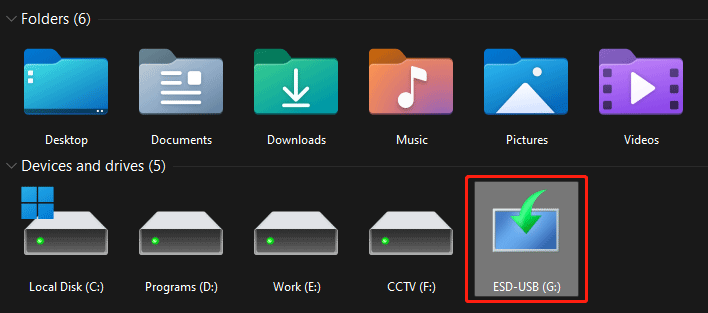
Step 2: Boot Windows 11 from quick boot menu – Use a device
There is a quick way to boot Windows 11 from a bootable USB drive. You can try it to see if you can boot Windows 11 from USB successfully.
1. Click the Start button in the taskbar and select the Power
2. Press and hold the Shift key and then click the Restart
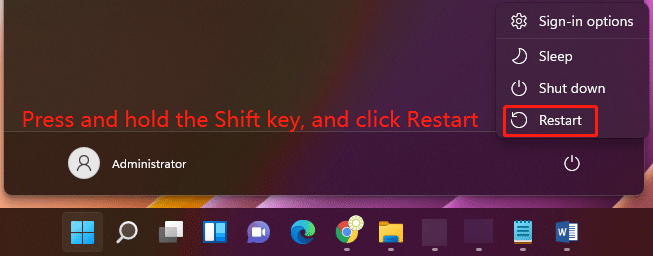
3. Your Windows 11 computer will restart and then boot into the Advanced Startup Options screen as follows. Then, click Use a device to continue.
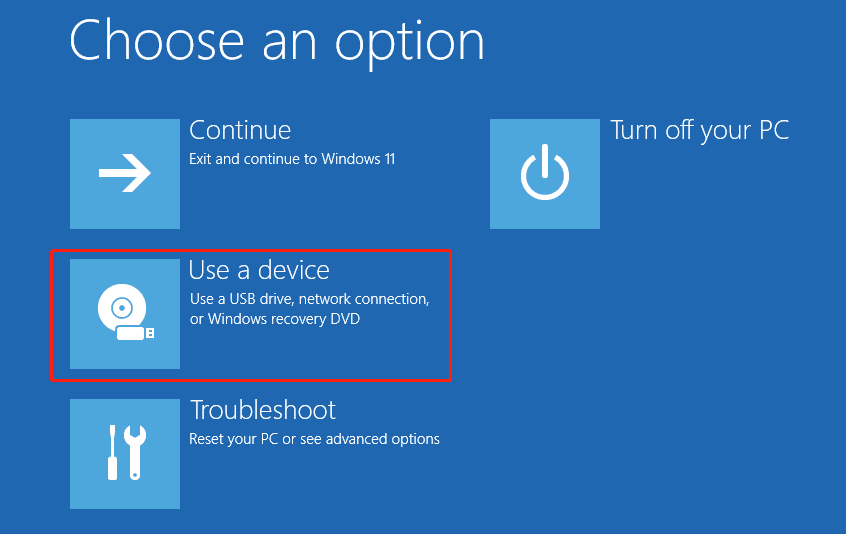
4. Select the target bootable USB drive and check if your PC can boot from that USB drive.
If your computer can successfully boot from the USB drive, everything will be OK. If not, it usually means that the USB drive is not a bootable device. In a situation like this, you need to create a bootable USB drive for your Windows 11 computer.
Step 3: Create a Bootable USB Drive for Windows 11
Choice 1: Create a MiniTool Bootable USB Drive
MiniTool Power Data Recovery is a free file recovery tool. With it, you can rescue your lost and deleted files from different types of data storage devices like computer hard drives, SSDs, memory cards, SD cards, and more on your Windows computer.
If you are not familiar with this software, you can first try the trial edition to see if it can find your needed files.
MiniTool Power Data Recovery TrialClick to Download100%Clean & Safe
When your Windows 11 computer is unbootable, you can use a full edition of this software to create a bootable USB drive and then boot your computer from this USB to rescue your files on the device.
Here we will show you how to create a MiniTool bootable USB drive using this software. You should do this on a normal working Windows computer.
1. Connect a USB drive to your computer.
2. Get a full edition of MiniTool Power Data Recovery from the MiniTool official store.
3. Download the software on your computer.
4. Open the software and use the license key you receive to register the software.
5. Click the disc icon (it is between the key icon and the headphone icon) on the top toolbar. MiniTool Media Builder will pop up. Click WinPE-based media with MiniTool plug-in to continue.
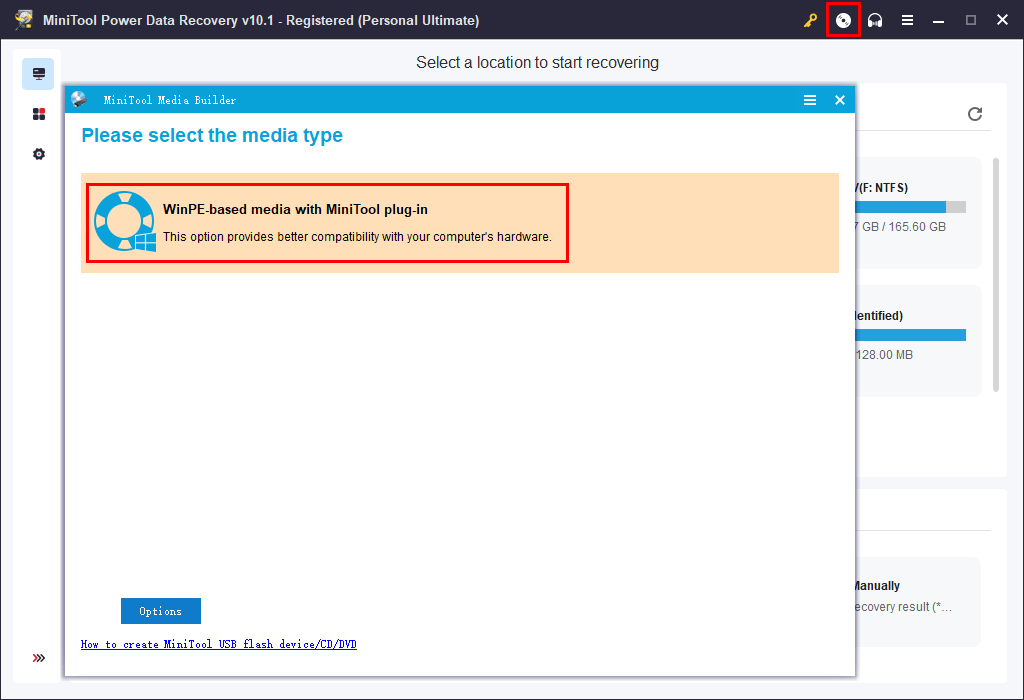
6. The connected USB drive will show up on the next page. Select it and a message pops up saying the data on the USB disk will be destroyed. Are you sure you want to build a USB boot disk? Click Yes to continue.
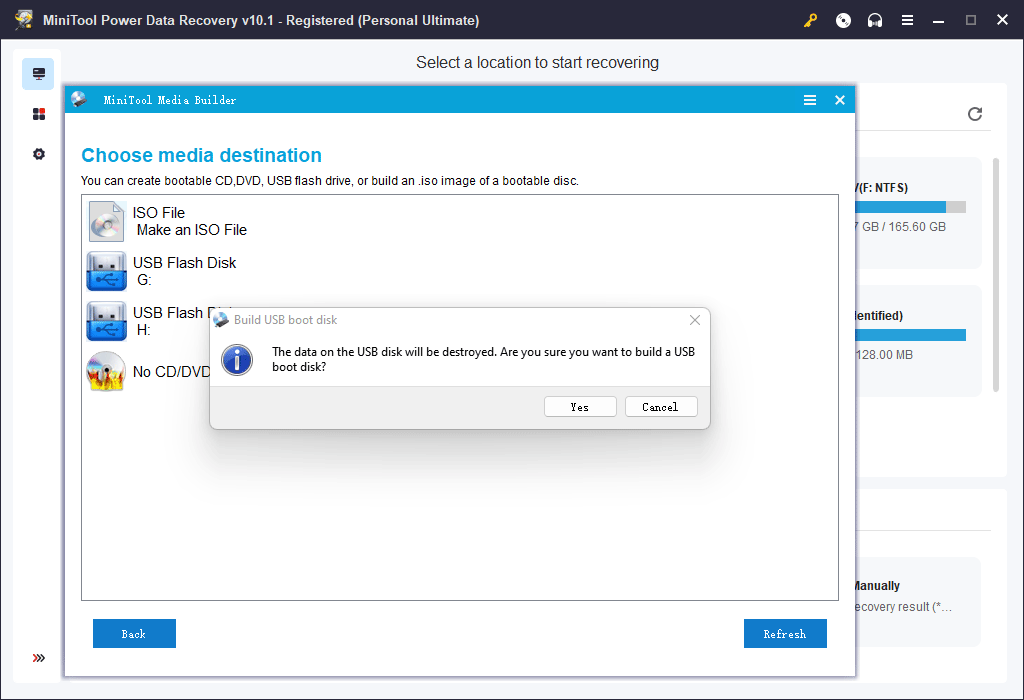
7. MiniTool Media Builder begins to build a bootable USB drive. The whole process will last for some minutes. You should wait until the whole process completes.
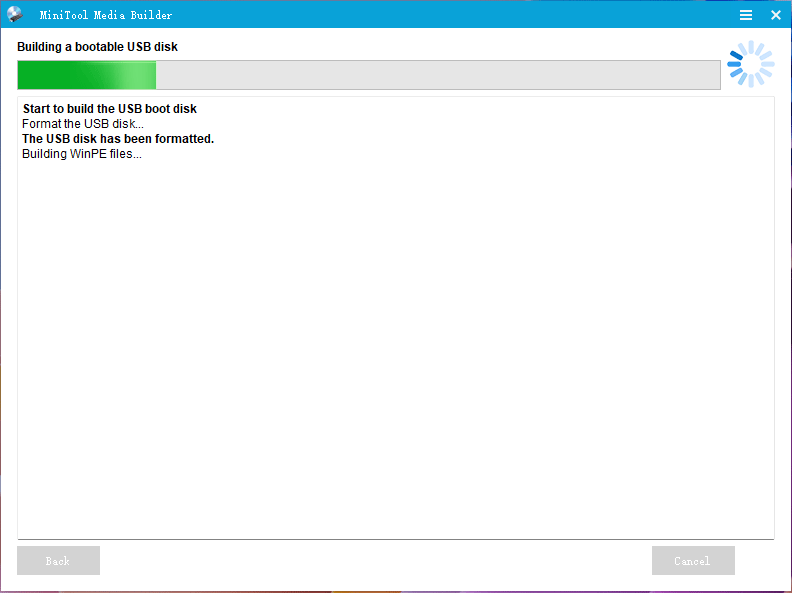
Rescue Your Files Using the Bootable USB Disk
Now, you get a bootable USB drive successfully. Then, you can use it to recover data from your unbootable Windows 11 computer.
- Connect the USB drive to your computer.
- Start your Windows 11 computer into BIOS and set the device to boot from the bootable USB drive.
- Normally, this data recovery software will be automatically loaded. Next, you can select the target drive to scan and recover your needed files to an external data storage drive to keep them safe.
Choice 2: Create a Windows 11 Installation USB Drive via Windows 11 Media Creation Tool
Windows 11 installation USB drive is a very useful tool if you don’t have a Windows 11 installation DVD at hand. With it, you can reinstall/install Windows 11 on your computer, repair your Windows 11 issues if the system won’t boot normally, uninstall updates, or restore your computer from a previous restore point.
The direct and easy method to create a Windows 11 installation USB drive is to use the Windows 11 Media Creation Tool. Here is how to do this:
1. Go to the Windows 11 software download page from Microsoft.
2. Click the Download Now button under the Create Windows 11 Installation Media section.

3. Plugin the USB drive.
4. Open the downloaded Windows 11 Media Creation Tool and follow the on-screen guide to create a Windows 11 Installation USB medium.
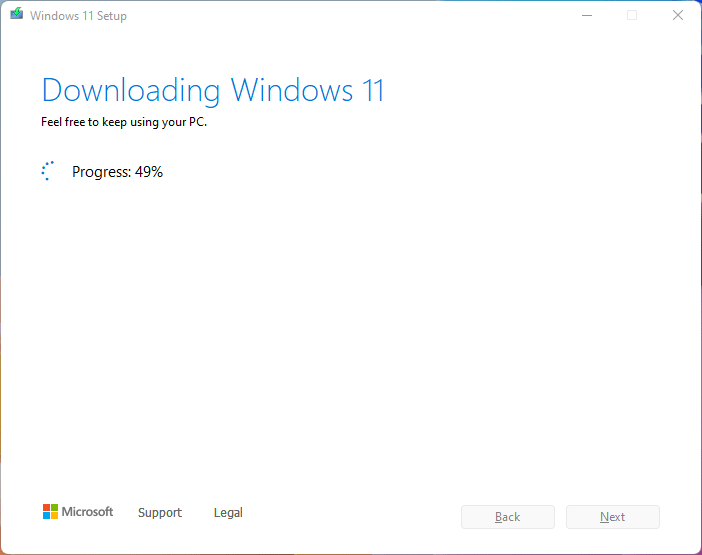
After creating a Windows 11 installation USB medium, you can shut down your computer, boot into BIOS, and set the USB drive as the boot drive. When you see the Windows setup interface as follows, you need to click Next to continue.
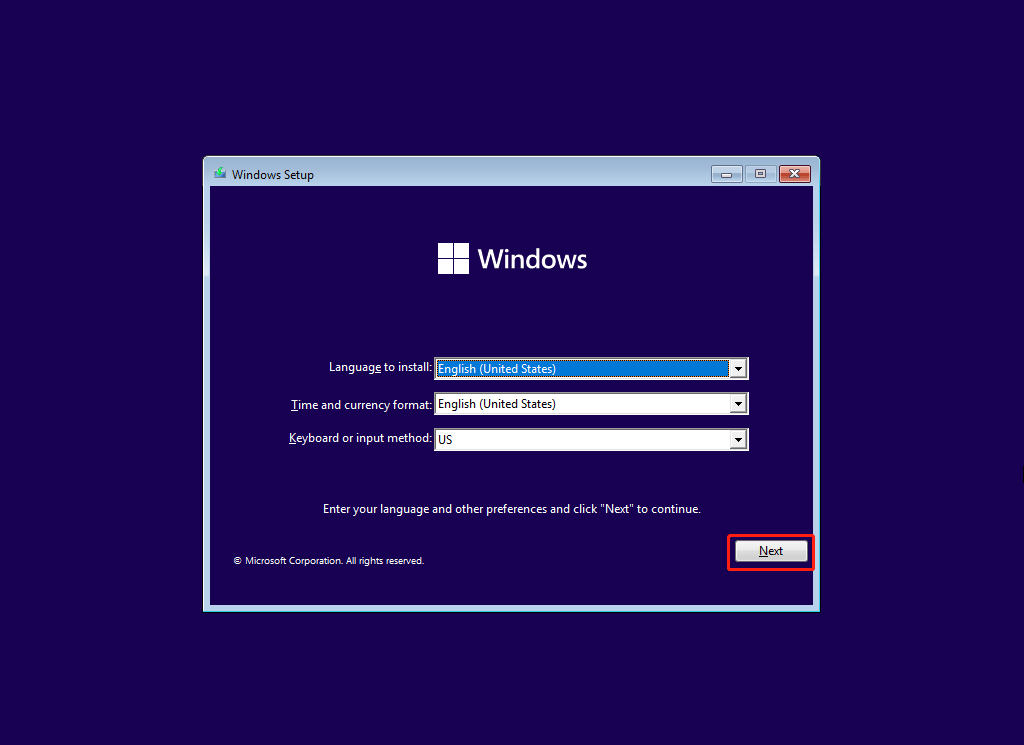
On the next page, if you want to reinstall/install Windows 11, you can click Install now and follow the on-screen instruction to install Windows 11 on your computer.
If you want to repair your Windows 11 device, you need to click the Repair your computer link and go to Troubleshoot to select a suitable option to solve your issue.
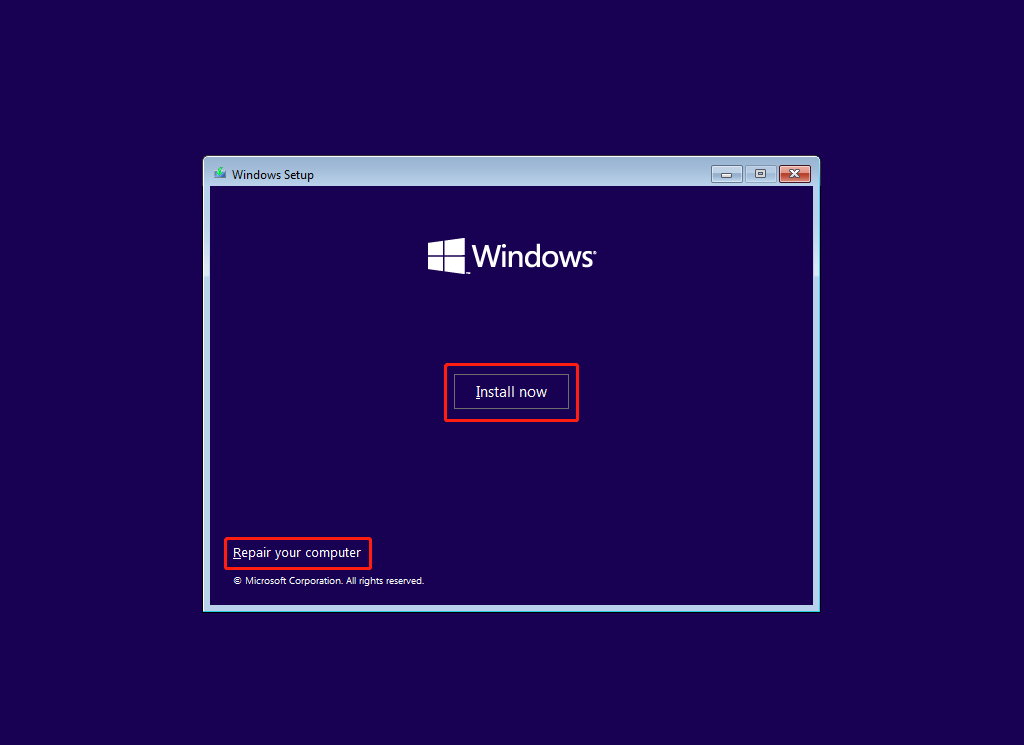
Solution 2: Try another USB Port on Your Computer
As mentioned above, if the USB port you are using is broken, Windows 11 bootable USB drive will not work. To rule out this possibility, you can try another USB port and boot from USB again to see if the issue disappears.
Solution 3: Use a New USB Drive
If your USB drive is too old, you can consider replacing it with a new one. After all, USB 1.0 or USB 2.0 drives are not suitable to be a bootable USB drive now.
Solution 4: Check Whether the USB Drive Is Corrupt
Perhaps, the USB drive is damaged or corrupted unexpectedly. You can connect the USB drive to a normal working computer and try to open it. If it is inaccessible, you can try to fix the corrupt USB drive. If the USB drive can’t be repaired, you need to use another normal USB drive to have a try.
Solution 5: Convert the File System for the USB Drive
As we have mentioned in the part of the main reasons for Windows 11 won’t boot from USB, the format of the USB drive is also a concern. If the file system for the USB drive is not right, you need to convert the format to a suitable one.
If you use the Windows built-in tools to change the format, you need to format the USB drive. If you want to do the job without data loss, you can try a third-party partition manager: MiniTool Partition Wizard.
This software has these two useful features: Convert FAT to NTFS and Convert NTFS to FAT. They allow you to complete the format conversion without data loss.
MiniTool Partition Wizard FreeClick to Download100%Clean & Safe
Solution 6: Set Your Windows 11 to Boot from the USB Drive
The last important thing is: you should set your Windows 11 computer to boot from the USB drive. This thing is not automatic. You need to do it manually. Here is a related tutorial: How to Boot from Burned MiniTool Bootable CD/DVD/USB Flash Drive.
Bottom Line
Windows 11 won’t boot from USB? After reading this article, you should know what you can do to fix this problem. Should you have any other related issues, you can let us know in the comments. You can also contact us via [email protected].

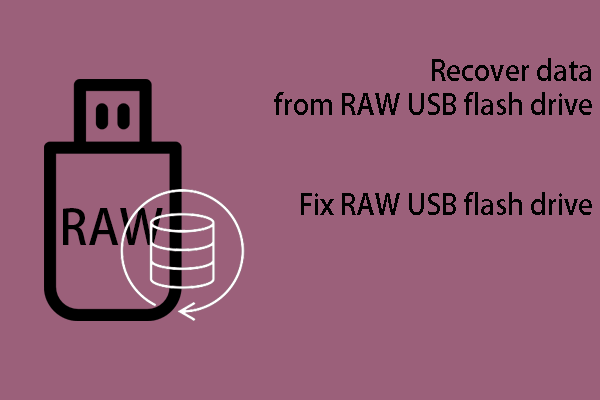
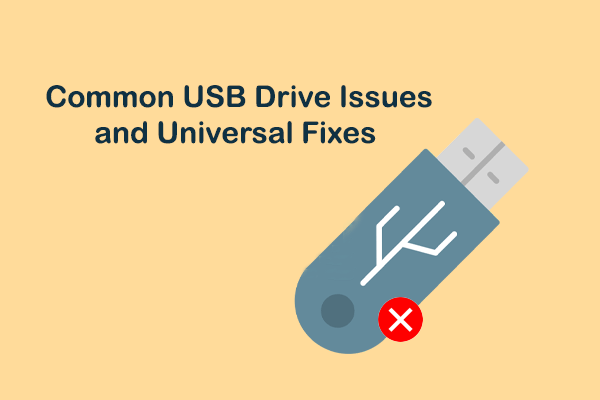
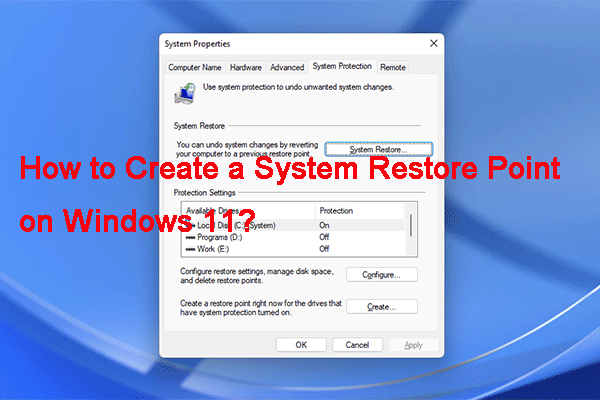
![How to Install/Download Windows 11 onto a USB Drive? [3 Ways]](https://images.minitool.com/minitool.com/images/uploads/2021/10/download-windows-11-onto-a-usb-drive-thumbnail.png)
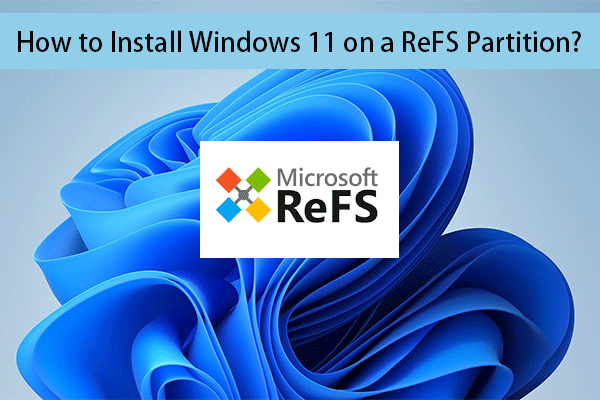
User Comments :